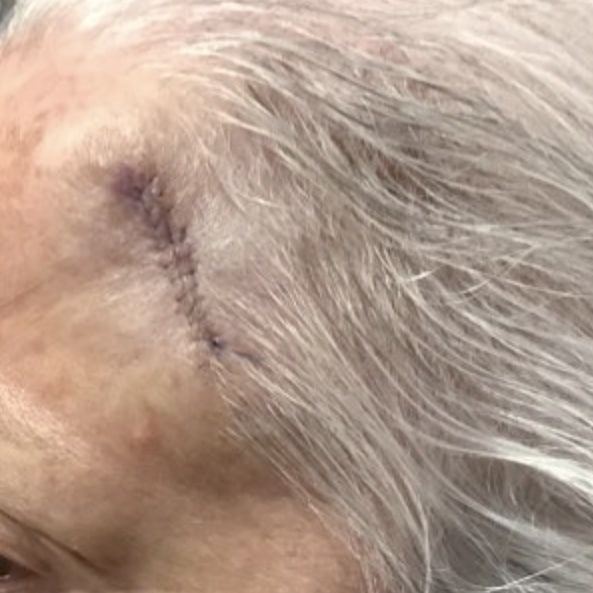Are you beginning to notice unwanted dark spots or redness on your face, neck or other body parts exposed to the sun? Do you feel your skin has lost its luster, and are beginning to notice signs of aging? Consider an IPL photofacial or photorejuvenation treatment to brighten and improve the texture and tone of your skin.
In this article we discuss what IPL (intense pulse light) is, how it helps improve skin pigmentation and vascular skin conditions, and what to do before and after your treatment to achieve the best results.
What is an IPL Photofacial?
Intense pulse light (IPL) is a technology that effectively treats multiple skin conditions by emitting varying wavelengths of light onto and into the skin. Treatment of the face using this technology is commonly referred to as an ‘IPL photofacial’.
What is IPL used for?
IPL is a non-invasive treatment for skin pigmentation and vascular skin conditions which usually appears as redness in the skin. It is also able to brighten the skin tone, texture, and brightness. IPL treatments can also be used for hair reduction.
How does IPL improve the appearance of skin?
The majority of damage in our skin happens in the dermis, the second layer of skin. These changes are reflected up through the epidermis, the top layer of the skin, and result in less than desirable appearances on the skin.
The IPL energy extends deep enough into the tissues of the dermis so undesirable changes no longer reflect up through the epidermis.
How does getting an IPL treatment feel?
IPL treatments can be slightly uncomfortable, depending on what conditions are being treated.
The pulses may cause a snapping sensation and warmth, but are usually very well tolerated. Topical numbing medications can be used to help make the treatments more comfortable. However, sometimes use of these numbing agents can make the treatment less effective, especially when treating vascular or red areas.
How long does a treatment take?
The average time to treat a face with IPL is 25-30 minutes. This can vary depending on the conditions being treated. Patients see the most benefit after a series of treatments. Most of the time this is 3-5 treatments separated by 3-4 weeks.
Who should not get IPL treatments?
- Patients who have been on accutane in the last 6 months
- Pregnant or breastfeeding patients
- Patients with permanent makeup or tattoos in the area to be treated
- Tan patients (tans must be at least 4-6 weeks old before having an IPL treatment)
- Patients who have used self-tanners in the last 14 days.
- Patients who have lupus, vitiligo, epilepsy, or scleroderma may have flares with IPL
Are IPL photofacials safe if you have a history of cold sores?
If you have a history of cold sores, an antiviral medication can be taken 1 day before the treatment, the day of the treatment, and 3 more days after treatment.
What to do before your skin rejuvenation appointment
To best prepare for your IPL photofacial appointment, we recommend following the below steps.
- Practice good sun protection.
- Do not tan the areas to be treated for 4-6 weeks prior to treatment.
- Avoid using self-tanning products for 2 weeks prior to treatment.
- Do not use topical retinoids for 2-3 days before an IPL treatment. Topical retinoids can be safely restarted 7 days after an IPL treatment.
- If you are using a strong glycolic acid product, it may be better to hold this for a few days before an IPL treatment.
What to expect after your IPL appointment
There are certain steps we recommend you take to avoid any adverse reactions after your treatment, and to maximize results.
Treatment areas go through a few healing stages before the skin has the desired outcome.
Pigmented lesions may darken after treatment and fade or flake off after a few days. The skin can have a coffee-ground look shortly after treatment. This is a good sign that brown spots have responded to the treatment and resolve without issue.
Vascular lesions may appear darker and bruise-like. This is also a good sign that some of the undesired blood vessels have been properly targeted. This usually fades after a few days to a week.
Acne lesions can appear more inflamed after treatment for a few hours to several days.
Some redness and swelling in the area are considered normal after treatment and may feel similar to a sunburn. This should resolve within 1-3 hours after treatment. You may use aloe vera or cold compresses if needed.
- Apply a healing serum once daily for 3-7 days after a treatment session.
- Practice good sun protection by using a broad spectrum sunblock (at least SPF 30) and avoid sun exposure and artificial tanning. Do this for at least 6 weeks.
- You can resume glycolic acid products or retinoids 7 days after treatment.
- Patients can resume normal activities immediately.
- If a blister or open area develops, please notify the office, and apply aquaphor or vaseline to the area.
Schedule your IPL skin rejuvenation appointment
IPL photofacials are one of many cosmetic dermatology services we offer. Call our office today at 215-315-3197 to schedule your consultation for an IPL photofacial or skin rejuvenation treatment.





